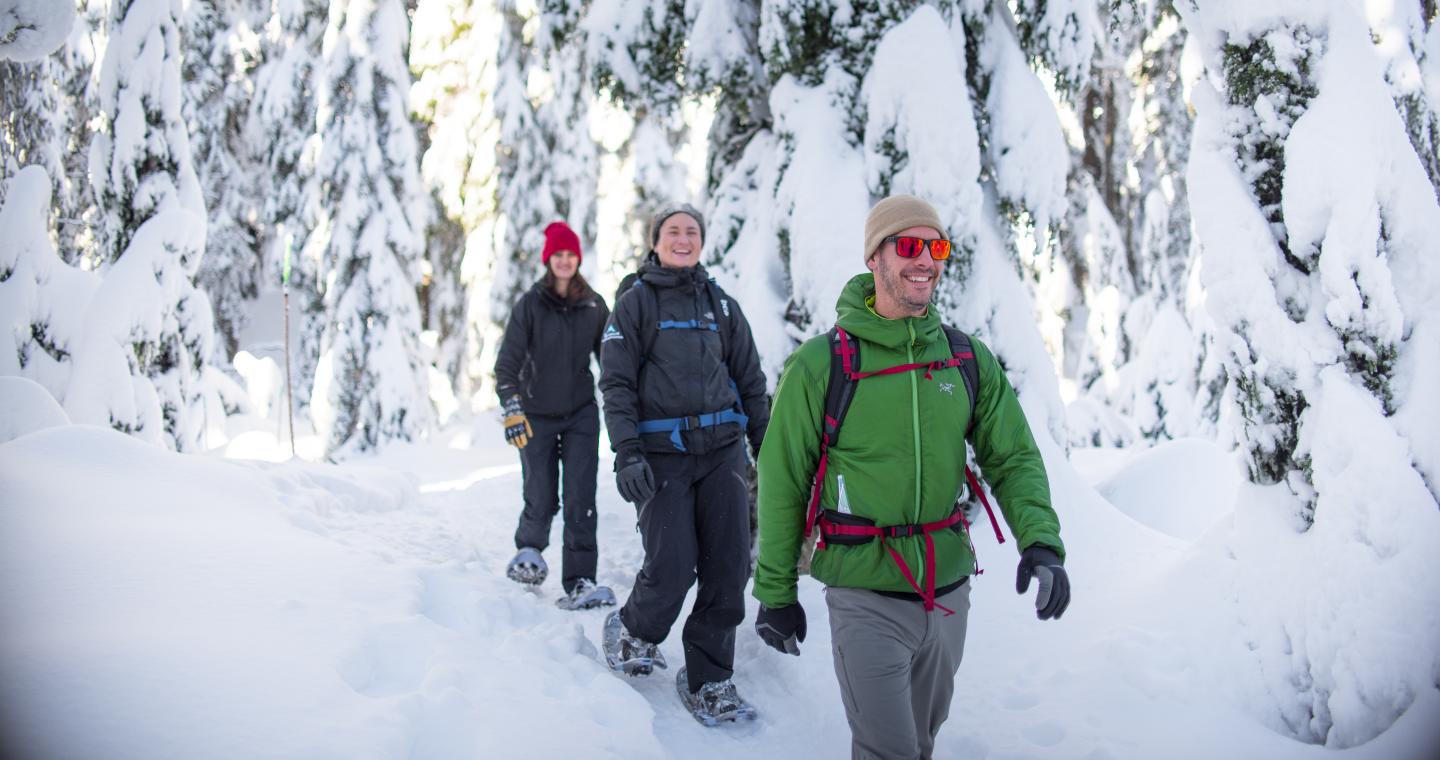
Snowshoeing is not just a winter activity; it is an incredible way to experience the great outdoors while embracing the beauty of winter landscapes. Whether you are a seasoned snowshoer or new to the sport, it’s always fascinating to discover interesting facts about this popular pastime. From its origins to its health benefits, snowshoeing offers a unique adventure that combines physical activity, stunning scenery, and a deep connection with nature. In this article, we will delve into 14 mind-blowing facts about snowshoeing that will leave you awestruck. So, get ready to be inspired and amazed by the wonders of snowshoeing!
Key Takeaways:
- Snowshoeing is a fun and affordable way to explore nature in the winter, burn calories, and relieve stress. It’s a versatile activity that can be enjoyed by the whole family, offering a unique way to experience wildlife and make new friends.
- Snowshoeing allows you to venture off the beaten path and experience the beauty of winter landscapes. It’s a low-impact sport that provides a peaceful escape from the hustle and bustle of daily life, while also offering a fantastic workout and a chance to connect with nature.
Snowshoeing has been around for thousands of years.
Snowshoeing is not just a modern recreational activity; it has deep roots in human history. Indigenous peoples, such as the Inuits and Native Americans, used snowshoes for transportation and hunting purposes over snowy terrain.
Snowshoeing is an excellent form of exercise.
Did you know that snowshoeing can burn up to 600 calories per hour? It is a fantastic cardiovascular workout that engages your leg muscles, core, and improves your balance and coordination.
Snowshoes come in various shapes and sizes.
There is a wide variety of snowshoe types available, from traditional wooden frames to modern lightweight designs for different terrain and snow conditions. Choosing the right snowshoe can make your winter adventures even more enjoyable.
Snowshoeing is a great way to explore nature in the winter.
With snowshoes, you can venture off the beaten path and experience the beauty of winter landscapes. It allows you to access areas that may be inaccessible by other means, opening up a whole new world of outdoor exploration.
You can snowshoe almost anywhere with enough snow.
Unlike skiing or snowboarding, snowshoeing doesn’t require specific slopes or trails. As long as there is enough snow to walk on, you can snowshoe in your local park, nature reserve, or even your backyard.
Snowshoeing is a low-impact sport.
Due to the large surface area of snowshoes, they distribute your weight evenly, minimizing the impact on your joints and reducing the risk of injury. This makes it an ideal activity for people of different fitness levels and ages.
Snowshoeing provides a unique way to experience wildlife.
Due to its quiet nature, snowshoeing allows you to observe animals in their natural habitat without disturbing them. You may come across footprints, tracks, or even catch a glimpse of elusive creatures during your snowshoeing adventures.
Snowshoeing can be a social activity or a solitary experience.
Whether you prefer to enjoy the tranquility of nature by yourself or bond with friends and family, snowshoeing offers both options. You can join organized group outings or embark on your own winter expeditions.
Snowshoeing is a great way to relieve stress.
Spending time in nature and engaging in physical activity has proven benefits for our mental well-being. Snowshoeing provides a peaceful escape from the hustle and bustle of daily life, allowing you to relax and rejuvenate.
Snowshoeing is an affordable winter activity.
Compared to other winter sports, snowshoeing is relatively inexpensive. Once you invest in a pair of snowshoes, there are no lift tickets or expensive equipment required. It’s a cost-effective way to enjoy the winter season.
Snowshoeing can be a family-friendly activity.
With the right equipment and a suitable trail, snowshoeing can be enjoyed by the whole family, including children. It’s a fun way to spend quality time together while staying active and exploring the winter wonderland.
Snowshoeing can be done at night.
For a unique experience, many snowshoers venture out after the sun goes down, equipped with headlamps. Snowshoeing at night allows for a different perspective, with the moon and stars lighting your way.
Snowshoeing can lead to new friendships.
Participating in group snowshoeing activities can introduce you to like-minded individuals who share your love for the outdoors. It’s a chance to connect with others, exchange stories and tips, and foster new friendships.
Snowshoeing is a versatile activity for all seasons.
While snowshoeing is primarily associated with winter, there are also specialized snowshoes designed for hiking in other seasons. These can be used to explore muddy terrains, sandy beaches, or rocky trails, providing year-round outdoor enjoyment.
Conclusion
In conclusion, snowshoeing is more than just a winter activity, it’s a way to embrace nature, stay active, and discover the beauty of the snowy outdoors. Whether you’re a seasoned hiker or a beginner looking for a new adventure, snowshoeing offers a unique experience that is both exhilarating and peaceful. From its ancient origins to its modern-day popularity, there are countless fascinating facts about snowshoeing that make it a truly mind-blowing activity. So, grab a pair of snowshoes, bundle up, and embark on a winter adventure like no other. You won’t be disappointed!
FAQs
Q: Is snowshoeing suitable for beginners?
A: Absolutely! Snowshoeing is a perfect activity for beginners. It doesn’t require any special skills, and the learning curve is minimal. Just strap on the snowshoes and start walking.
Q: Do I need any special equipment for snowshoeing?
A: The main equipment you need for snowshoeing is, of course, a pair of snowshoes. Additionally, it is recommended to wear warm, waterproof clothing, sturdy boots, and bring essentials like water, snacks, and a map of the area you’ll be exploring.
Q: Is snowshoeing dangerous?
A: Snowshoeing is generally considered a safe activity. However, it’s essential to be prepared and cautious. Stay on marked trails, check weather conditions beforehand, and let someone know your plans. It’s also advisable to have basic knowledge of the area and carry safety essentials like a flashlight and a first aid kit.
Q: Can children and older adults participate in snowshoeing?
A: Absolutely! Snowshoeing is a versatile activity suitable for people of all ages and fitness levels. It’s a great way for families to enjoy the winter together and for older adults to stay active while enjoying the beauty of nature.
Q: Where can I go snowshoeing?
A: You can go snowshoeing in various locations such as national parks, ski resorts, dedicated snowshoeing trails, and even in your backyard if there’s enough snow. Check local outdoor recreation websites or contact tour operators for recommendations in your area.
Was this page helpful?
Our commitment to delivering trustworthy and engaging content is at the heart of what we do. Each fact on our site is contributed by real users like you, bringing a wealth of diverse insights and information. To ensure the highest standards of accuracy and reliability, our dedicated editors meticulously review each submission. This process guarantees that the facts we share are not only fascinating but also credible. Trust in our commitment to quality and authenticity as you explore and learn with us.


